Fresh from our Wild Rover New Year's experience, we managed to escape and took an early morning bus to Copacabana (not the Rio beach!) on Lake Titicaca. Of course we had already visited the Peruvian side of the world's largest high-altitude lake in Puno, but it was clear on arrival that Copacabana was a much more picturesque lake-side location. We arrived in time for a lunch of the local specialty, grilled 'trucha criolla' (rainbow trout) from one of the many beachfront stalls. The freshness of the trout was clear as we saw one of the ladies gutting the fish a few meters from our table. Sam enjoyed his trucha so much that he chose the stuffed - bacon and spinach - trout creation later that evening. We even managed to have a trucha pizza the following day!
Copacabana is nestled between two hills and perched on the southern shore of Lake Titicaca
. For centuries it was the site of religious pilgrimages, and today people flock to the fiestas of this small, bright and enchanting town. It is one of the main holiday destinations for Bolivians where they can be seen on pedalos and in zorb balls on the sea. Playing table football with an ice-cream in one hand is also a very popular pastime.
The sparkling Moorish-style cathedral dominates the town with its domes and colourful ceramic tiles. Outside the cathedral we witnessed 'Bendiciones de Movilidades' (blessing of automobiles) which occurs daily during the festival season. This ritual involves people draping colourful flowers across their cars, letting off firecrackers under them and blessing them with lashings of alcohol and coca leaves. Slightly unnerving - we kept our distance!
We took a steep walk up Cerro Calvario, passing by the 14 stations of the cross as we neared the summit, for brilliant sunset views across Lago Titicaca and Copacabana. We were able to look out to Isla del Sol to where we would catch a boat the following day
...
Isla del Sol, at 3808m, is a large 70-sq-km island with several traditional communities and some pre-Colombian ruins, but it is the tranquil setting and amazing views that really make it worth a visit. The island is also vehicle-free. We were dropped off at the north point of the island, where we visited the Chincana ruins, before beginning our hike along a ridge across the length of the island. As per usual the traditional route was not quite enough for us and we had heard that the beachside village of Cha'lla merited a visit. We therefore ventured off-piste and scrambled down the ridge to find ourselves in a very pleasant farming community alongside the lake.
At the end of an exhausting day, we were accosted by a small local child who coerced us into her family's hotel. She had selected her prey well, as not wishing to walk any further, we agreed. The 360-views from our room were stellar but unfortunately 'la habitacion' came without running water or a flushing toilet! A massive thunderstorm overnight also took out the electricity. In the morning, we waded through the flooded pathways and down the Escalera del Inca, terraced gardens with rolling waterfalls either side of the steps. We boarded the 2-hour boat back to Copacabana with a stowaway dog on-board who seemed very bemused when he disembarked on the mainland!
We completed our Lake Titicaca experience with one final fill of trucha before catching the bus back to La Paz - 4 hours.
Isla del Sol
Thursday, January 02, 2014
 Copacabana, Bolivia
Copacabana, Bolivia
Other Entries
-
6Living Lima...
Oct 1183 days prior Lima, Peruphoto_camera10videocam 0comment 0
Lima, Peruphoto_camera10videocam 0comment 0 -
7A couple of nights on the Sours...
Oct 1381 days prior Pisco, Peruphoto_camera12videocam 0comment 0
Pisco, Peruphoto_camera12videocam 0comment 0 -
8Mysteries in the sand...
Oct 1579 days prior Nasca, Peruphoto_camera11videocam 0comment 0
Nasca, Peruphoto_camera11videocam 0comment 0 -
9Inca-ing it up...
Oct 1777 days prior Cusco, Peruphoto_camera15videocam 0comment 1
Cusco, Peruphoto_camera15videocam 0comment 1 -
10The Inca Trail to Machu Picchu...
Oct 2074 days prior Machu Picchu, Peruphoto_camera16videocam 0comment 0
Machu Picchu, Peruphoto_camera16videocam 0comment 0 -
11El Cañón del Colca
Oct 2767 days prior Arequipa, Peruphoto_camera15videocam 0comment 0
Arequipa, Peruphoto_camera15videocam 0comment 0 -
12The wonders of the totora reed...
Oct 3064 days prior Puno, Peruphoto_camera13videocam 0comment 0
Puno, Peruphoto_camera13videocam 0comment 0 -
13Ahora aprendemos espanol...
Nov 0360 days prior Sucre, Boliviaphoto_camera22videocam 0comment 0
Sucre, Boliviaphoto_camera22videocam 0comment 0 -
14Bolivia's salty jewel...
Nov 2538 days prior Uyuni, Boliviaphoto_camera25videocam 0comment 1
Uyuni, Boliviaphoto_camera25videocam 0comment 1 -
15Being like Butch Cassidy...
Nov 2934 days prior Tupiza, Boliviaphoto_camera13videocam 0comment 0
Tupiza, Boliviaphoto_camera13videocam 0comment 0 -
16Tarabuco Market
Dec 0132 days prior Sucre, Boliviaphoto_camera12videocam 0comment 0
Sucre, Boliviaphoto_camera12videocam 0comment 0 -
17El Cerro Rico
Dec 1221 days prior Potosi, Boliviaphoto_camera14videocam 0comment 0
Potosi, Boliviaphoto_camera14videocam 0comment 0 -
18Club Universitario v Nacional Potosi
Dec 1518 days prior Sucre, Boliviaphoto_camera5videocam 0comment 0
Sucre, Boliviaphoto_camera5videocam 0comment 0 -
19The home of 'fine' Bolivian wine...
Dec 2013 days prior Tarija, Boliviaphoto_camera15videocam 0comment 1
Tarija, Boliviaphoto_camera15videocam 0comment 1 -
20Feliz Navidad!
Dec 249 days prior Sucre, Boliviaphoto_camera7videocam 0comment 0
Sucre, Boliviaphoto_camera7videocam 0comment 0 -
21La Paz, 'The City of 3 Ps...'
Dec 267 days prior La Paz, Boliviaphoto_camera19videocam 0comment 0
La Paz, Boliviaphoto_camera19videocam 0comment 0 -
22A belated white Christmas...
Dec 285 days prior Condoriri, Boliviaphoto_camera15videocam 0comment 1
Condoriri, Boliviaphoto_camera15videocam 0comment 1 -
23Isla del Sol
Jan 02 Copacabana, Boliviaphoto_camera16videocam 0comment 0
Copacabana, Boliviaphoto_camera16videocam 0comment 0 -
24The World's Most Dangerous Road
Jan 075 days later Coroico, Boliviaphoto_camera10videocam 0comment 0
Coroico, Boliviaphoto_camera10videocam 0comment 0 -
25La Ciudad Blanca...
Jan 1210 days later Sucre, Boliviaphoto_camera13videocam 0comment 0
Sucre, Boliviaphoto_camera13videocam 0comment 0 -
26Busy, buzzy Cochabamba...
Jan 3129 days later Cochabamba, Boliviaphoto_camera5videocam 0comment 0
Cochabamba, Boliviaphoto_camera5videocam 0comment 0 -
27¡Adiós Sucre!
Feb 0231 days later Sucre, Boliviaphoto_camera6videocam 0comment 1
Sucre, Boliviaphoto_camera6videocam 0comment 1 -
28Bienvenido a Chile!
Feb 1645 days later Arica, Chilephoto_camera13videocam 0comment 0
Arica, Chilephoto_camera13videocam 0comment 0 -
29Ghost towns and piscolas...
Feb 1948 days later Iquique, Chilephoto_camera16videocam 0comment 0
Iquique, Chilephoto_camera16videocam 0comment 0 -
30Into the Desert...
Feb 2251 days later San Pedro de Atacama, Chilephoto_camera13videocam 0comment 0
San Pedro de Atacama, Chilephoto_camera13videocam 0comment 0 -
31Birthday piscos...
Feb 2554 days later La Serena, Chilephoto_camera11videocam 0comment 1
La Serena, Chilephoto_camera11videocam 0comment 1 -
32Chile's capital...
Feb 2857 days later Santiago, Chilephoto_camera11videocam 0comment 1
Santiago, Chilephoto_camera11videocam 0comment 1 -
33'Valpo'
Mar 0360 days later Valparaiso, Chilephoto_camera14videocam 0comment 0
Valparaiso, Chilephoto_camera14videocam 0comment 0 -
34The Maule Valley
Mar 0562 days later Talca, Chilephoto_camera4videocam 0comment 1
Talca, Chilephoto_camera4videocam 0comment 1 -
35The Chilean Lakes District...
Mar 0764 days later Pucon, Chilephoto_camera10videocam 0comment 0
Pucon, Chilephoto_camera10videocam 0comment 0 -
36Kunstmann, ich liebe dich...
Mar 1067 days later Valdivia, Chilephoto_camera4videocam 0comment 0
Valdivia, Chilephoto_camera4videocam 0comment 0 -
37Isla Grande de Chiloe
Mar 1168 days later Castro, Chilephoto_camera11videocam 0comment 0
Castro, Chilephoto_camera11videocam 0comment 0 -
38A transport hub...
Mar 1370 days later Puerto Montt, Chilephoto_camera3videocam 0comment 0
Puerto Montt, Chilephoto_camera3videocam 0comment 0 -
39Into Southern Patagonia...
Mar 1673 days later Punta Arenas, Chilephoto_camera11videocam 0comment 0
Punta Arenas, Chilephoto_camera11videocam 0comment 0 -
40El Fin del Mundo...
Mar 1976 days later Ushuaia, Argentinaphoto_camera15videocam 0comment 0
Ushuaia, Argentinaphoto_camera15videocam 0comment 0 -
41The White Continent
Mar 2481 days later Antarctic Peninsula, Antarcticaphoto_camera86videocam 0comment 0
Antarctic Peninsula, Antarcticaphoto_camera86videocam 0comment 0

 Copacabana, Bolivia
Copacabana, Bolivia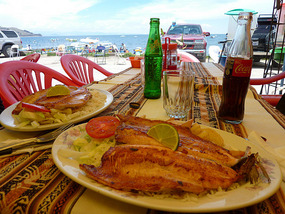
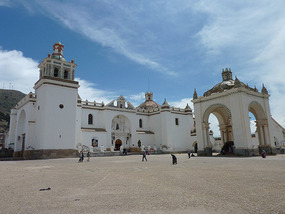





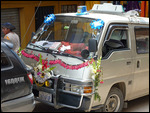
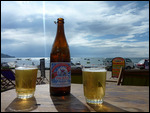
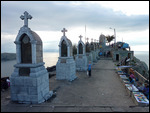
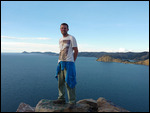
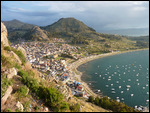
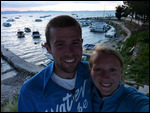
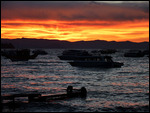
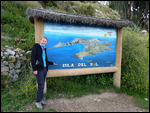
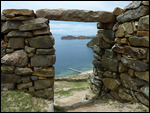
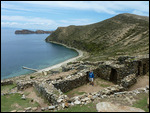
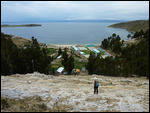
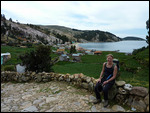
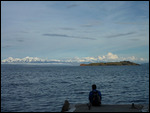
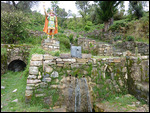
2025-05-23